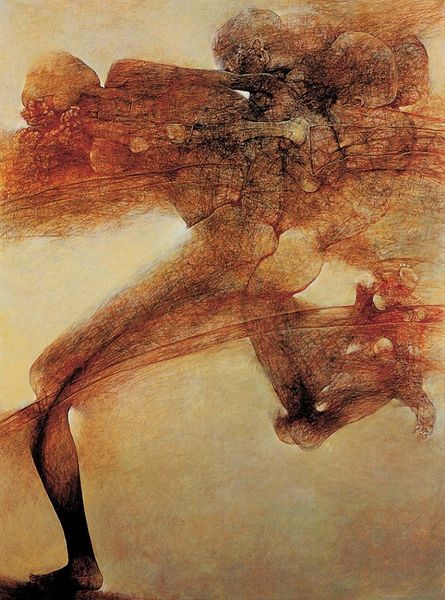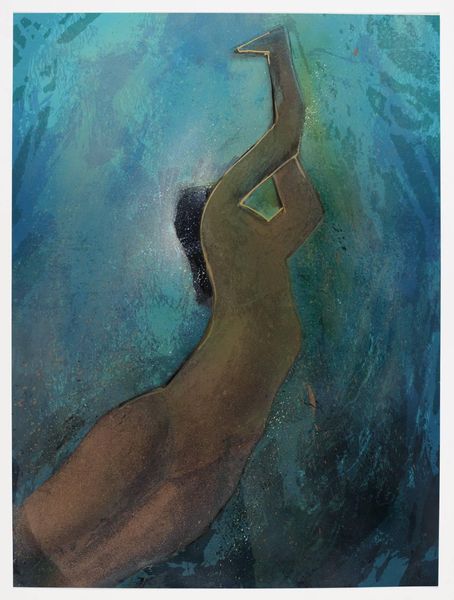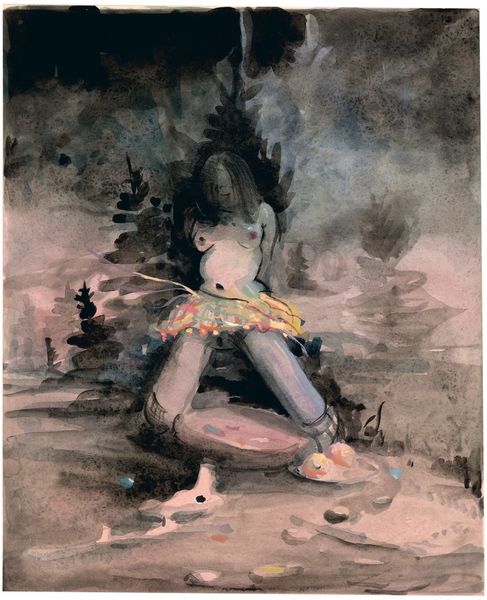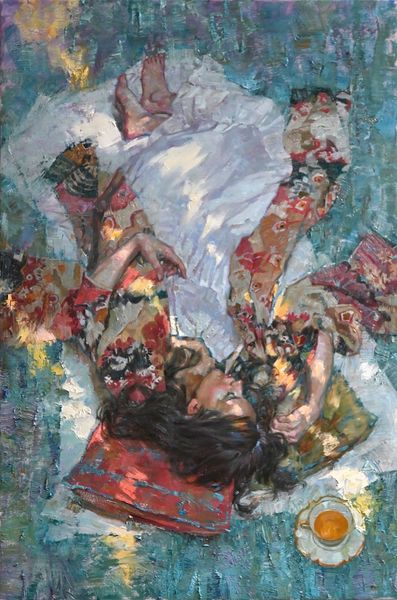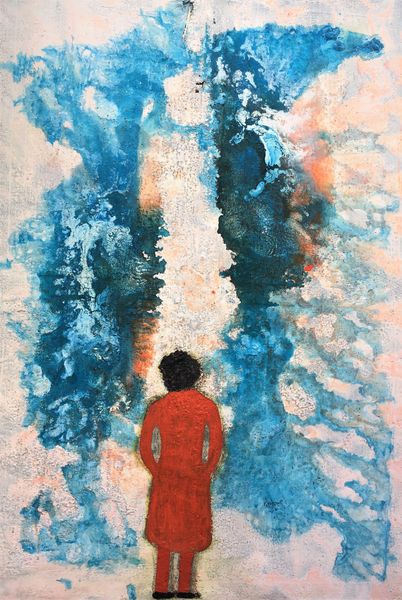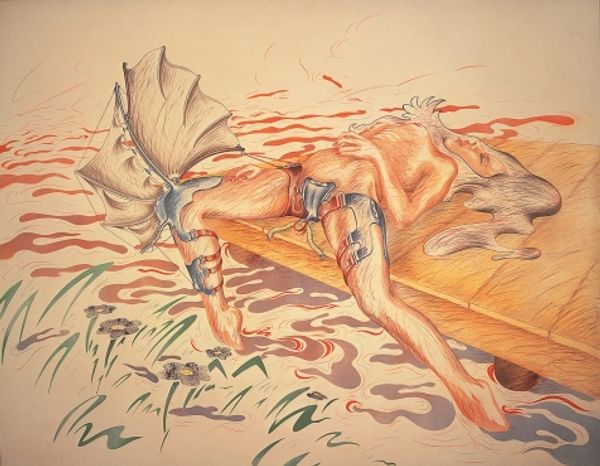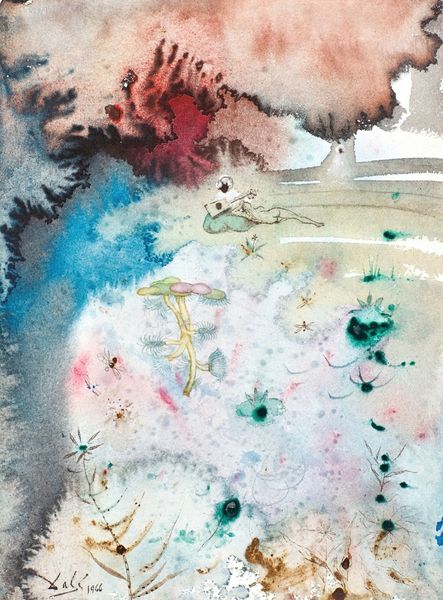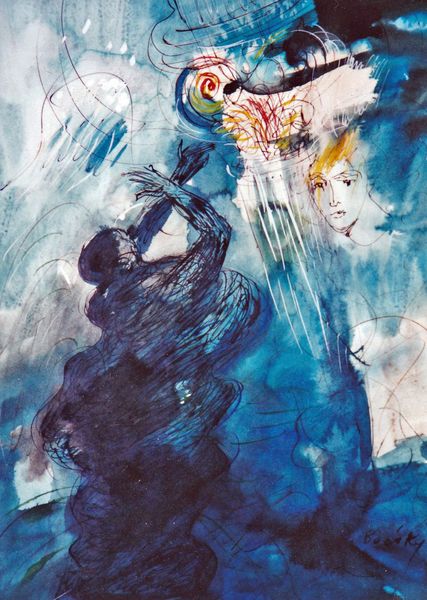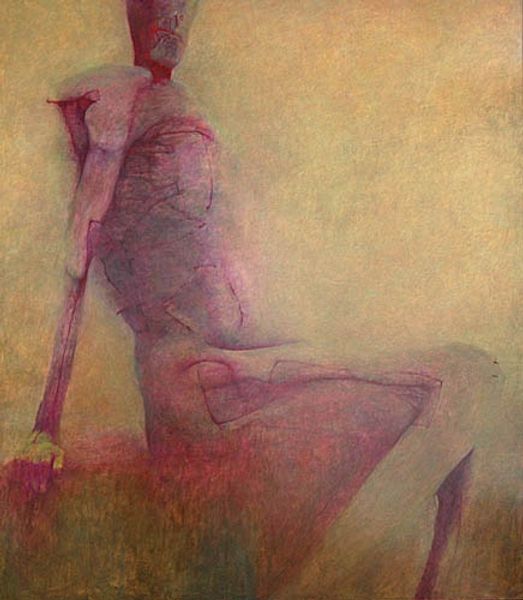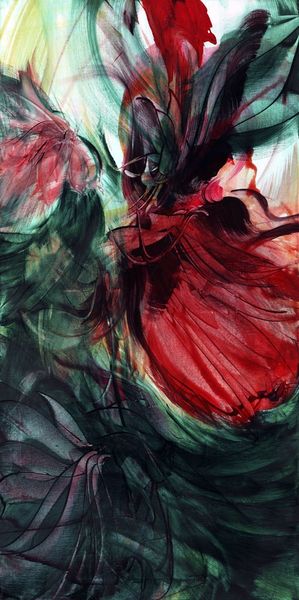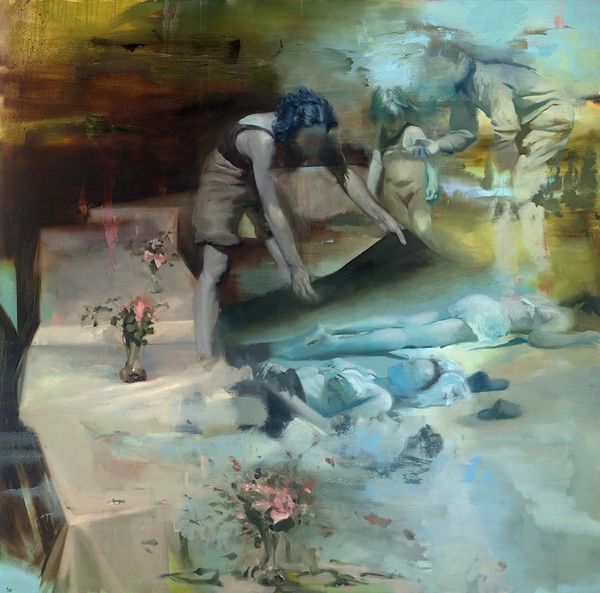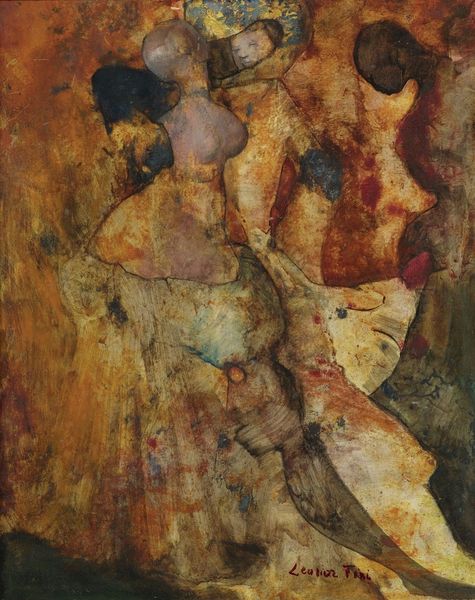
painting, pastel
#
portrait
#
painting
#
impressionism
#
impressionist painting style
#
possibly oil pastel
#
oil painting
#
watercolour illustration
#
genre-painting
#
pastel
#
watercolor
Dimensions: 66 x 36 cm
Copyright: Public domain
Curator: Standing before us is Edgar Degas’ “The Green Dancer,” created around 1879. You can find it here in the Thyssen-Bornemisza Museum in Madrid. Editor: What strikes me first is the composition—the cropped figures and that explosion of green. It feels very immediate, as if we’ve caught a fleeting moment. Curator: The application of pastel is key here. Degas wasn't interested in some idealized vision of the dancer. The use of pastel, almost blurring the forms, shows movement and emphasizes the materiality of the dancers' costumes and the overall effect of the dance itself. Editor: Absolutely, and beyond the visible layers of pastel, there's also something poignant about the staging of Parisian culture and these dance performances. We see only parts of the other dancers—suggesting a whole network of labor around dance at the time. Curator: I agree. Think of the industrial processes to produce these pigments for pastel production and mass availability for other painters at the time—to create these scenes in their studios! The layered color brings volume to these almost spectral forms. It is more about making and how art gets produced than how we read individual, exceptional figures. Editor: And this, in turn, connects directly to how ballet performances were funded. A huge market around ballet allowed the accessibility of spaces like the theater in the late nineteenth century for people like Degas. Curator: Exactly! This wasn't a divine spark but social forces converging that produce this moment, captured with specific materials—layered, considered—labor that reveals a precise making of art and dance in our historical moment. Editor: Yes, so considering this piece as an impression rather than just a pretty glimpse helps it tell a much fuller story. It brings together the artistic process, artistic accessibility, and the socioeconomic aspects of Parisian ballet life. Curator: For me, this work pushes us to ask what the role of labor and industrial material practices do in art history and what making the dance possible implies. Editor: For me, "The Green Dancer" reminds us how social, economic and cultural conditions are reflected and refractured within art, how what we choose to look at and who gets seen is always subject to a range of historical considerations.
Comments
No comments
Be the first to comment and join the conversation on the ultimate creative platform.
